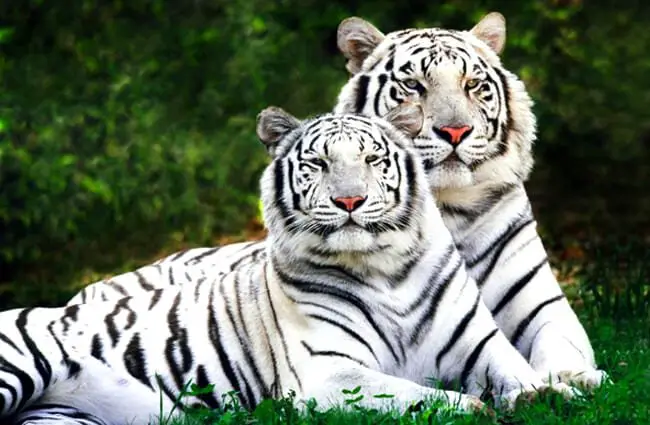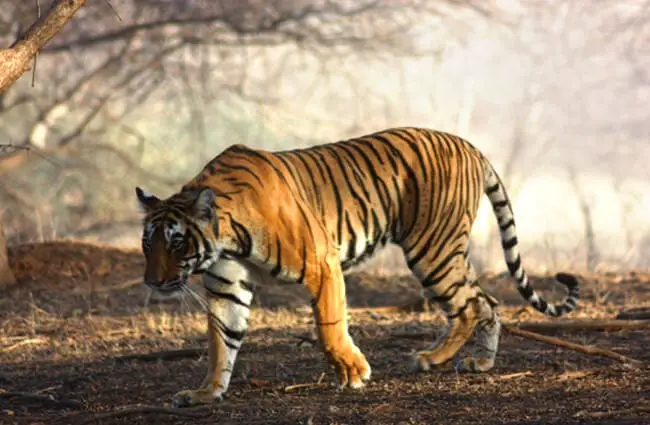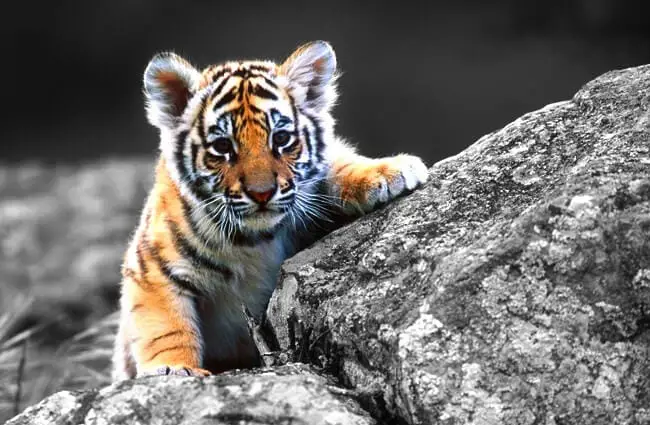The Majestic Bengal Tiger: A Comprehensive Guide
The Bengal tiger, Panthera tigris tigris, is arguably the most iconic and recognizable of all tiger subspecies. This magnificent predator reigns supreme in the diverse ecosystems of the Indian subcontinent, captivating imaginations and playing a crucial role in maintaining ecological balance. This guide delves into the fascinating world of the Bengal tiger, exploring its history, behavior, habitat, and future.

Origins and Evolution
The story of the Bengal tiger is interwoven with the evolutionary history of all tigers. The earliest ancestors of modern tigers likely emerged in Siberia around two million years ago. Over millennia, they dispersed southward, eventually giving rise to the various subspecies we know today. The Bengal tiger specifically is believed to have diverged from other tiger populations around 85,000 to 120,000 years ago, adapting to the unique environment of the Indian subcontinent. Genetic studies continue to refine our understanding of their evolutionary journey.
Habitat and Distribution
Bengal tigers are primarily found in India, Nepal, Bhutan, and Bangladesh. Their preferred habitats range from tropical rainforests and grasslands to mangrove swamps and deciduous forests. They demonstrate remarkable adaptability, thriving in both high altitudes and low-lying areas. Key habitats include the Sundarbans mangrove forest, the Terai Arc Landscape, and various national parks and tiger reserves. The presence of sufficient prey, water sources, and dense vegetation cover is a critical factor in determining suitable territory. Historically, their range extended further west into Pakistan and north into Myanmar, but populations have become fragmented due to habitat loss and poaching.

Physical Characteristics
Bengal tigers are renowned for their striking appearance. They typically have a vibrant orange coat with dark stripes, providing excellent camouflage in their natural habitat. The stripe pattern is unique to each individual, like a fingerprint. White tigers, a rare color variant caused by a recessive gene, also exist. Adult males usually weigh between 180 and 258 kilograms, while females weigh between 100 and 160 kilograms. Their powerful build, muscular limbs, and large paws enable them to take down large prey. A notable feature is their retractable claws, which are essential for hunting and climbing.
Diet and Hunting Strategies
Bengal tigers are apex predators, meaning they sit at the top of the food chain. Their diet primarily consists of large ungulates, including deer, wild boar, gaur, and buffalo. They are opportunistic hunters, also preying on smaller animals such as monkeys, birds, and fish when available. They are primarily ambush predators, relying on stealth and camouflage to approach their prey undetected. They stalk their target and then launch a powerful attack, typically targeting the throat or nape of the neck. A successful hunt is crucial, as they can consume up to 30 kilograms of meat in a single feeding. They often drag their kill to a secluded area to avoid competition from other predators.

Social Behavior and Reproduction
Bengal tigers are generally solitary animals, except during mating season or when a mother is raising her cubs. They communicate through scent marking, vocalizations, and visual signals. Territories are maintained through scent marking and occasional confrontations. Mating occurs throughout the year, but is more frequent during the monsoon season. After a gestation period of around 103 days, a litter of two to six cubs is born in a secluded den. Cubs are completely dependent on their mother for the first few months of their lives. They learn essential hunting and survival skills by observing and imitating their mother. Cubs typically remain with their mother for about two years before becoming independent.
Ecological Role and Interactions
As apex predators, Bengal tigers play a vital role in maintaining the health and balance of their ecosystems. By controlling populations of herbivores, they prevent overgrazing and ensure the survival of plant species. They also contribute to the overall biodiversity of their habitats. They share their territory with other large predators, such as leopards and dholes, with whom they occasionally compete for resources. They also interact with various prey species, influencing their behavior and distribution. The presence of tigers is often indicative of a healthy and functioning ecosystem.

Bengal Tigers and Humans: A Complex Relationship
The relationship between Bengal tigers and humans has been complex and often fraught with conflict. Historically, tigers were hunted for sport and as perceived threats to livestock. Habitat loss and poaching continue to be major threats to their survival. In recent years, there has been growing awareness of the importance of tiger conservation. Community-based conservation programs, anti‑poaching efforts, and habitat restoration projects are helping to protect tiger populations and mitigate human‑wildlife conflict. Successful coexistence requires education, awareness, and collaboration between local communities, conservation organizations, and governments.
Conservation Status and Threats
The Bengal tiger is currently listed as Endangered on the IUCN Red List. Their population has declined significantly over the past century due to habitat loss, poaching, and human‑wildlife conflict. Current estimates suggest there are around 2,500 Bengal tigers remaining in the wild. Major threats include deforestation, fragmentation of habitats, illegal trade of tiger parts, and retaliatory killings due to livestock depredation. Effective conservation strategies require addressing these threats through habitat protection, anti‑poaching measures, community engagement, and international collaboration.
Interesting Facts
- Bengal tigers are excellent swimmers and often enter water to cool off or hunt.
- They have a rough tongue covered in papillae, which helps them scrape meat off bones.
- The stripe pattern of each Bengal tiger is unique, like a human fingerprint.
- White tigers are not albinos; they have a recessive gene that affects pigmentation.
- Bengal tigers can roar loudly enough to be heard from miles away.
- They are crepuscular hunters, meaning they are most active during dawn and dusk.
- Cubs learn to hunt by playing with their mother and siblings.
- A group of tigers is called a streak, ambush, or pack.

For the Aspiring Zoologist
Research into Bengal tiger behavior, genetics, and ecology continues to expand our understanding of this magnificent species. Areas of particular interest include the impact of climate change on tiger populations, the effectiveness of different conservation strategies, and the development of non‑invasive methods for monitoring tiger populations. Sophisticated tracking technologies, such as camera traps and GPS collars, are providing valuable data on tiger movements, habitat use, and social interactions.
Encountering a Bengal Tiger in the Wild
Encountering a Bengal tiger in the wild is rare but potentially dangerous. If you do encounter a tiger, remain calm and avoid direct eye contact. Slowly back away while facing the tiger. Do not run or make sudden movements. Make yourself appear as large as possible by raising your arms or holding up a jacket. If the tiger approaches, make loud noises and throw objects to scare it away. Report the encounter to local wildlife authorities immediately.

Caring for Bengal Tigers in Captivity
Providing appropriate care for Bengal tigers in captivity requires a deep understanding of their natural history and behavioral needs. Enclosures should be large and complex, providing ample space for exercise and exploration. Enrichment activities, such as puzzle feeders, scent‑marking opportunities, and climbing structures, are essential to stimulate their minds and prevent boredom. Diet should consist of high‑quality meat, supplemented with vitamins and minerals. Regular veterinary checkups and preventative healthcare are crucial to maintain their health and well‑being. It’s important to avoid excessive human interaction to maintain their natural behaviors.
The Bengal tiger remains a symbol of wild beauty and ecological integrity. Protecting this iconic species requires a collective effort to conserve its habitats, combat poaching, and promote coexistence between humans and wildlife. By understanding and appreciating the magnificent Bengal tiger, we can ensure its survival for generations to come.

![Red Angus Closeup of a beautiful Red Angus cowPhoto by: U.S. Department of Agriculture [pubic domain]https://creativecommons.org/licenses/by/2.0/](https://animals.net/wp-content/uploads/2020/03/Red-Angus-4-238x178.jpg)




![Red Angus Closeup of a beautiful Red Angus cowPhoto by: U.S. Department of Agriculture [pubic domain]https://creativecommons.org/licenses/by/2.0/](https://animals.net/wp-content/uploads/2020/03/Red-Angus-4-100x75.jpg)

